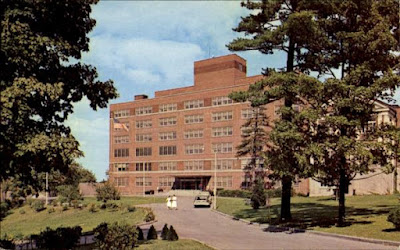Do Church Growth Consultations Work?
Below is from a no-longer functioning website of the Hartford Institute for Religious Research (HIRR). (Hartford Seminary, where HIRR exists, is now Hartford International University.) The web-post asks and answers the increasingly pertinent question, "Do Church Growth Consultations Work?" The web-post first appeared in June 2004. It references research from 1986 done by C. Kirk Hadaway. I was in high school in 1986, which was 37 years ago. In 1986, we were living in a culture that was much more friendly to church life. According to Pew Research, in 1986 only around 8% of Americans claimed "none" when asked about their religious affiliation. In 2021, that number soared to 29%. Many more examples of research point to the decline of religion in America as well as the decline in how religion is perceived. There is a whole generation (Millenials) and one still progressing (Gen-Z) that are largely non-religious. In other words, "the market" for church involvement is drastically worse than it was in 1986. The number of those "in the market" is rather low. If the research discussed below was done in 2023, I'm not sure if the answer of "Yes-but" would be the same. Anyway, I'll let you decide that. Here is the Hartford Institute for Religious Research's archived link from June 2004.
"Do Church Growth Consultations Work?
The quick answer: Yes - but typically only in the short term.
The longer answer: Faced with declining membership, many church congregations naturally want to “do something.” Some turn to church growth consultants for help. But do these consultations really work?
In a study by C. Kirk Hadaway, he suggests that consultations are the “mainline equivalent of a revival” -- they can boost membership growth, but growth tapers off as enthusiasm wanes.
“The results of this analysis clearly show that the consultations tend to have a positive effect on participating churches,” Hadaway wrote in the study. “However, the positive effect does not last very long for most churches.”
Hadaway analyzed 208 Christian Churches (Disciples of Christ) that participated in church growth consultations from 1983 to 1986.
The efficacy of church growth consultations poses an important question, because the majority of churches in the United States are either plateaued or declining in membership. In response, a “church growth movement” has sprung up, offering an array of books, training conferences and workshops on church growth and evangelism, as well as specialized on-site consultations.
Hadaway’s analysis focused on evangelism and church growth/ congregational planning consultations conducted on-site at churches. Most church growth consultants have not systematically evaluated the effectiveness of these consultations. Typically, consultants can offer examples of churches where a consultation worked well, but can’t give statistical data on the percentages of churches that grew as a result or the average number of new members gained.
The study was conducted with a list of churches provided by the National Evangelistic Association for Christian Churches (Disciples of Christ), now known as The Net Results Resource Center. Typically, Net Results’ consultations come in two forms: a visit by a consultant who presents a pre-packaged evangelism/growth program aimed at inspiring, motivating and educating the congregation; or, a more customized approach aiding the congregation in developing a strategy of its own.
Analysis revealed that the average church experienced a decline of 1.0% in participating membership in the year prior to the consultation. In the year of the consultation, the average church grew by 1.7% in participating membership. However, the positive effect did not continue, as the average church lost participating members in the two years following the consultation (see figure 6.1 in the full report). Similar results were observed in aggregate measures (see figure 6.2 in the full report).
Overall, 44% of the churches grew by at least one person in average worship attendance in the year prior to the consultation. During the year of the consultation, this percentage increased to 50%. Very few churches (only 12%) grew during the consultation year AND during the two subsequent years, suggesting that few churches are thoroughly ‘revitalized’ through church consultations.
So what does it all mean for churches considering a church growth consultation?
First, even with programs of short duration (1/2 day or 1 day), consultations do improve the membership, worship attendance and church school enrollment of the average participating church. This was true even among many churches that did not follow through with the programs launched by the consultations.
Second, however, very few churches see long-term growth. After the initial enthusiasm wears off, churches tend to return to the “old ways” of doing things, and the emphasis on evangelism fades. For real, long-term benefits to occur, churches must make deeper, more profound changes.
“The challenge to church consultants is to create planning models that recognize these realities,” Hadaway concluded. “That’s the only way to assist churches in the process of becoming vital, accepting institutions that reach out to the communities that surround them.”
C. Kirk Hadaway's full report titled "Do Church Growth Consultations Really Work?" is available for download in .pdf format."

Comments
Post a Comment